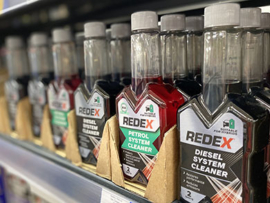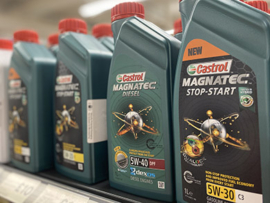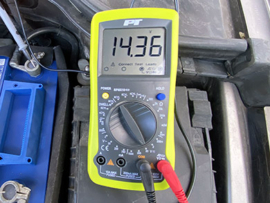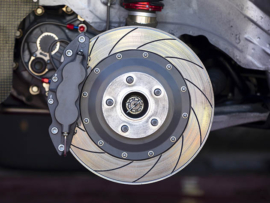
Any car owner’s worst nightmare surely has to be the idea of footing the bill for a major “out of warranty” engine or gearbox repair. That’s why, with the rapidly escalating cost to repair, powertrain warranties are growing in popularity. These warranties typically cover the major components that propel the vehicle, including the engine, transmission, and all the parts that feed power to the wheels.
Unlike a “bumper to bumper” warranty that covers pretty much any faulty component (not including tires, light bulbs and wear and tare items) between the front and rear bumpers, the powertrain warranty is limited to specific components and faults that effect the powertrain. These warranties can be issued by the manufacturer as part of the new vehicle warranty, or by dealers or even third parties as “stand-alone” warranties – such as when purchasing a used vehicle.
But like most contracts, powertrain warranties are very specific in what faults and components they cover – and, importantly, not all of these warranties are the same.
What Does a Powertrain Warranty Cover?
The powertrain warranty covers the cost to repair or replace the major powertrain components should they malfunction:
- Engine
- Transmission
- Driveshafts
- Transfer Case (for all-wheel and four-wheel drive vehicles)
- Differentials
Because of the complexity of the parts – and the intricacies of what the assurance defines as a warranty repair – it is important to understand the scope of cover provided as it relates to each major component group.
Note: Engine Repairs Typically Covered by the Powertrain Warranty
The engine and all of its mechanical components are usually covered against failure, and include major cost items, such as:
- Cylinder block and heads
- Fuel injectors
- Valvetrain
- Engine internals
- Mechanical water, fuel, and oil pump
- Oil pan
- Gaskets and seals
Related posts: The Best Engine Head Gasket Sealers and Fuel Injector Cleaners
According to recent RepairPal data, a powertrain warranty could save a car owner from having to lay out a substantial amount on unexpected repair costs. For instance:
- A timing chain/ belt replacement could cost between $1,266 and $1,871
- An oil pan replacement could set the owner back about $728 to $956
- The cost to replace a water pump would be somewhere between $301 and $653
Note: Transmission Faults Included in the Powertrain Warranty
Typically, all internal mechanical parts such as torque converter, gear sets and hydraulic valve-bodies are covered by the warranty. Which similar to engine repairs can save the owner a tidy sum on unexpected repairs. Here are some examples of average costs when carrying out repairs to a transmission:
- A transfer case replacement could cost about $2,466 and $2,884
- A faulty transmission replacement would cost between $4,000 and $8,000
Note: Front and Rear Wheel Drive Systems Covered by the Warranty
Driveline components typically covered by the warranty would include side-shafts, differential crown-wheel and pinion and constant velocity joints and transfer cases – all repairs that would burden an owner with significant costs should they fail unexpectedly:
- The cost to replace a side-shaft would be in the region of $485 to $607
- A constant velocity joint replacement is likely to cost between $2,622 and $2,923
- The bill for replacing the axle seals could come to about $158 to $326
Even though a powertrain warranty does away with those expensive and unexpected repair bills, it is important to note that not all powertrain warranties are administered the same and it is therefore important to clearly understand what is covered and what is not, by carefully reading the contract – including the fine-print.
What Does a Powertrain Warranty Not Cover?
Like any warranty the powertrain warranty is intended to cover failed parts in the powertrain – not to replace components due to wear and tear.
This is best explained by way of an example:
If a piston collapses at 30,000 miles, the work will be covered if the vehicle meets the prescribed conditions of the contract. However, if the vehicle begins to use oil at 30,000 miles the warranty administrators are not likely to authorize a repair, arguing instead that this was fair wear and tear. To avoid any unpleasant surprises, it is best you familiarize yourself with the terms of the contract up front.
Most warranties also require the vehicle to be routinely serviced, and specifically exclude repairs due to any unauthorized modifications made to the vehicle that could impact the durability of the powertrain – for instance fitting wider rims and tires.
You may also find your repair claim rejected because the component, although part of the powertrain, has been explicitly excluded. Here follows a list by, powertrain group, of parts that are not covered by most powertrain warranties:
1) Engine Exclusions
- Sensors
- Electronic fuel injectors
- All high-pressure fuel system repairs
- Engine control module and/or module programming
- Starter motor
- Alternator
- Wiring
- Connectors
- Engine radiator
- Coolant hoses
- Cabin heater core
2) Transmission/ Transaxle Exclusions
- Transmission cooling lines
- Hoses
- Heat exchanger
- Sensors
- Transmission control module and/or module programming
- Wiring
- Electrical connectors
- Clutch and pressure plate
3) Transfer Case Exclusions
- Transfer case cooling lines
- Hoses
- Heat exchanger
- Sensors
- Wiring
- Electrical connectors
- Transfer case control module and/or module programming
4) Front and Rear Wheel Drive System Exclusions
- Wheel bearings
- Driven wheels inner and outer hub bearings
- Locking hubs
- Drive system cooling
- Hydraulic lines
- Hoses
- Heat exchanger
- Sensors
- Wiring
- Electrical connectors related to drive systems
- Drive system control module and/or module programming
The warranty will also clearly exclude any repairs resulting from accidental damage or damage from corrosion due to unauthorized chemical treatments or “aftermarket” products, or if the vehicle has exceeded the time or mileage conditions.
How Long Does a Powertrain Warranty Last?
Powertrain warranties have wide ranging terms and mileage stipulations. New vehicle cover typically spans anything from 4 years and 50,000 miles to 10 years with 100,000 miles – whichever comes first. Used vehicle offerings, on the other hand are a lot more flexible. Short-term powertrain warranty cover is available from about 6 months or 6000 miles up to periods that are very similar to some of the manufacturers’ offerings.
Because the duration of powertrain warranties on used vehicles varies, it is important to get the terms of the warranty in writing before signing the agreement. Read the terms very carefully to ensure you understand the scope and type of warranty you are purchasing, up front.
Other Vehicle – Warranty Offerings
In understanding the terms of the powertrain warranty it is handy to also know what other warranties are available and how they differ.
1) The Drivetrain Warranty
The drivetrain warranty is very similar to a powertrain warranty, but excludes anything related to the engine. Thus only the components that direct the power from the engine to the wheels are covered.
2) The Bumper-to-Bumper Warranty
A bumper-to-bumper warranty is a comprehensive cover usually offered by OEMs on new vehicles and warrants just about any defect or failure related to material or labor, but excludes wear and tear. The cover period is normally considerably shorter than the powertrain warranty.
3) Vehicle Service Contract
The service contract is often confused with warranty cover because of their similarities. However, while both powertrain warranties and vehicle service contracts provide some element of repair or maintenance for a specific period of time, they differ in terms of what and how they cover the repair. VSCs are often more focused on the wear and tear parts, such as brake pads and fuel filters and may therefore exclude more major repairs – leaving these to warranty contracts.
There is no doubt that a good powertrain warranty buys peace of mind and enhances the motoring experience, but as with any legally binding contract make sure you study the terms – including the fine print – to make sure you understand what is covered and what is excluded.
We do an efforts to find, research and recommend the best products. So, we may receive commissions from purchases that you make after following the links in our product reviews.







